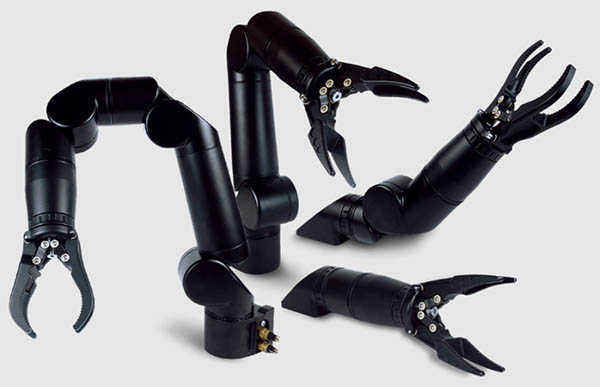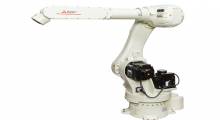Every robotic arm has a set number of axes or degrees of freedom of movement, ranging from one to 12 to 13 axes. The degrees of freedom directly affect a robot's functionality, so it's crucial for designers, integrators, and operators to choose the right number of axes.
Depending on the application, more degrees of freedom (DoF) may not always be better. Here are the basics for determining the right number of axes for your robot.
Axes and robot functionality
In most cases, a robot's number of axes cannot be changed after it has been built (although mounting options can change that). So, DoF is a core part of a robot arm's design, determining its range of capabilities, noted gripper provider Robotiq.
Without enough movement, a robot won’t be able to perform the necessary tasks. Too many degrees of freedom can also be a problem, making the robot overly difficult to control and program.
The number of axes is generally determined by the number of motors in the robot, so you can often get an approximation of a robot’s degrees of freedom by counting the number of motors it has. This is true for pneumatic robot arms as well, which use compressed air and valves rather than mechanical motors.
Robot axes can be thought of in terms of an X-Y-Z Cartesian plane. One- and two-axis robots are not common due to their highly limited range of motion. Three-axis and four-axis robots are where things start to get a bit more functional.
A three-axis robot can move along all of the X-Y-Z axes. A common example of three-axis motion is a crane, which is capable of moving side to side, up and down, and back and forth. It can’t twist and turn on any of these axes, though.
Three- and four-axis robot arms are perfectly functional for many applications. If you need a robot that glides back and forth in two or three directions, fewer degrees of freedom may be all you need. However, many industrial robots today require much more agility, calling for five- and six-axis robots.
“The additional range of movement allows six-axis robots to do more things, such as welding, palletizing, and machine tending, explained Richard Vaughn, a senior automation engineer at Bosch Rexroth Corp. and a member of the American Society of Mechanical Engineers (ASME).
“Programming their movements in 3D is complex, so software typically maps the motion to a set of world coordinates, in which the origin sits on the pedestal’s first joint axis,” he said.
Five- and six-axis: The sweet spot?
Four-, five-, and six-axis robots offer a higher degree of freedom. Most industrial robots today are either five- or six-axis. They can move along all three axes and turn along two or three axes as well.
Six-axis robots are considered “fully free” since they can move and turn along all axes. These are also sometimes called linear and rotational degrees of freedom, according to Reach Robotics.
A six-axis robot can perform both linear and rotational motion along each axis of motion. If you are thinking in terms of a Cartesian grid, a six-axis robot will be able to reach every point on that grid.
Six-axis robots have become a go-to model for a wide range of industrial applications and resemble the human arm in terms of dexterity and flexibility.
So, why would anyone bother with fewer degrees of freedom? This goes back to the old adage, “If it isn’t broken, don’t fix it.” Sometimes, a simpler robot is all you need. Robots with more degrees of freedom are more complex to program and maintain and will generally be more expensive as well.
“There are hundreds of software options that can typically be applied to a given robot and controller,” commented Greg Martin, an engineer at Bastian Solutions. “Thus, it is important to understand the robotic programming details and requirements.”
As Martin emphasized, software can make a significant difference in ease of use with robots with more DoF. If more axes are needed, the right programming can be helpful for simplifying operations.
Find the right degrees of freedom
There are all kinds of robots on the market today. In the future, robots could play an even more prominent role in manufacturing and many other industries.
Collaborative robots are emerging to fill a unique need for human-friendly robots. These robots can be a good option if you want the freedom of motion a six-axis robot offers but with less complexity. Cobots are designed to be easier to program and operate than their industrial cousins.
A robot’s degree of freedom determines its functionality. While having more DoF means a robot is capable of a wider range of motion, fewer degrees of freedom may make for a simpler operating experience.
The best way to determine how many degrees of freedom your robot arm should have is to determine the minimum number of axes it needs to be fully functional.

About the author
Emily Newton is a technology writer who enjoys writing about the latest innovations changing our world. Read more of her articles online at Revolutionized Magazine.
Article topics
Email Sign Up


















